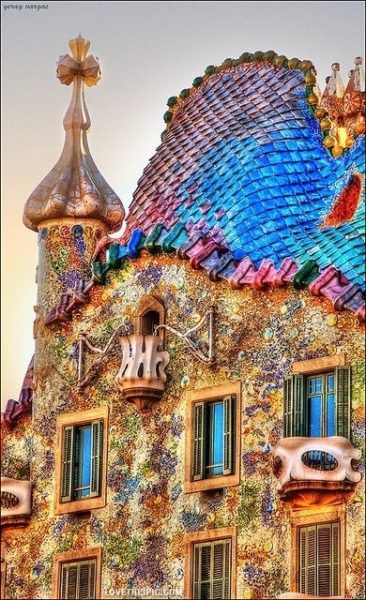What is Modernism: A Brief History
Modernism stemmed from the Industrial revolution, a time where rapid changes to the landscape at the hands of manufacturing, transportation and changes to the urban landscape as city centres began to prosper. Before this time artists were commissioned to produce art depicting scenes from the bible or mythology; but as the landscape changed there was new inspiration and artists begun to take influence from their surroundings. This was perceived as a reaction from the past and this style of art was centred around innovation, experimentation and the embracing of new materials and colour, to create artwork reflective of the time.
Modernism reflected changes in society, the experimentation of colour and lines and a tendency towards abstract depiction is reminiscent in the works of Antoni Gaudi, scattered throughout Barcelona.
At the end of the 19th century, Barcelona was beginning to transform and its’ culture was transforming, in Barcelona, the urban landscape was developing and there was a significant increase in the quantity of buildings being developed. The return of the ‘los indianos’, Spaniards that were returning home with their fortunes and the modern lifestyle influences from Latin America, who were keen to bring around changes.

Barcelona’s economic prosperity and the rise of the bourgeoisie was clearly evident. The Passeig de Gracia is a road that unites the old and new town and this is the destination that depicts so much of the work Antoni Gaudi. This area became a desirable location for the Catalan middle classes to spend their time and money in the abundance of luxury shops. The wealthiest members of society wanted to build their houses as demonstration of their wealth.
Josep Batllo was a wealthy textile business owner, he bought a bland and dreary building and enlisted the services of Antoni Gaudi to transform the building into something more prominent and bold, the result created one of the most iconic buildings of the modernism movement. This movement is credited with development of Barcelona. The development of the building known as Casa Battlo in the Passeig de Gracia is a celebration of Gaudi and he is credited as one of the most dynamic of this movement.
Caso Battlo embodies typical modernist and Gaudi style. Modernist architecture is characterised by the use of curved lines, merging the functional and the aesthetic of a building, the use of plant and animal symbols, asymmetry and a more organic style and shape. Modernism embraces the use of colour and the use of new materials incorporated with existing is typical of this style.
Caso Battlo, has a fantastical and imaginative façade with the use of glass and stone, wavy lines and covered in a rainbow of cleared mosaics in colours of the sea and sand made from glass and ceramics. The roof is shaped like the back of large scaled animal, often likened to a dragon, the ornamental spine forms the top of the building. The main gallery overlooks passersby on the Passeig de Gracia and a full panorama of the outside view is possible running the whole width of the room. The interior pillars are decorated with modernist floral designs. Balconies adorn the exterior projecting outward over the pavement. Much like Gaudi’s work Caso Batllo is an organic and colourful representation of the time, a representation of a creature adorning the pavement.
